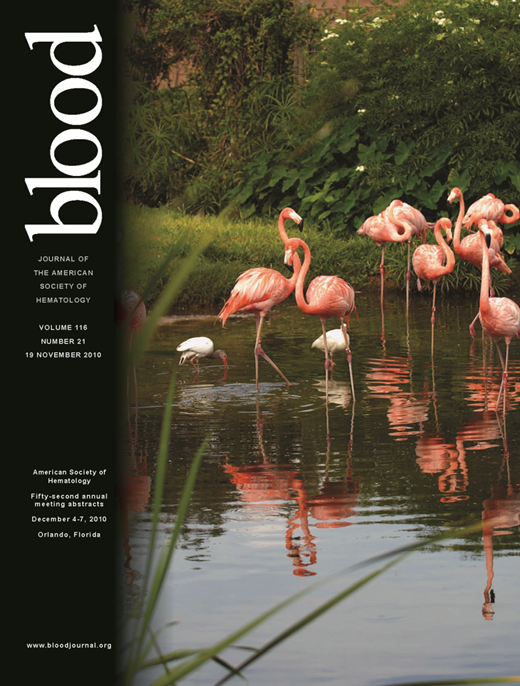Abstract
Abstract 2668
Indirect markers of pulmonary hypertension (PH) are associated with significant risk of early mortality in adults with sickle cell disease (SCD). Currently, there are limited data on hemodynamic predictors of mortality in PH patients with SCD.
To identify risk factors associated with mortality and to estimate the expected survival in a cohort of patient with SCD-related PH documented by right heart catheterization (RHC).
We collected hemodynamic data from 86 consecutive adults with SCD who underwent RHC based on elevated tricuspid regurgitant velocity (TRV) on echocardiography and clinical suspicion of PH. Survival rates from the time of diagnosis of PH by RHC and dates of enrollment were estimated by the Kaplan-Meier method. Mortality risk factors were analyzed by the Cox proportional hazards regression. Patients found to have PH by RHC (mean pulmonary artery pressure ≥25 mmHg). were compared to 447 general sickle patients for hemolytic markers, TRV, exercise capacity and overall survival. For a highly stringent definition of pulmonary arterial hypertension (PAH), we utilized a highly conservative pulmonary vascular resistance (PVR) cutoff of 3 Woods' units, approximately six standard deviations (SD) above normal in adults with SCD. Pulmonary venous hypertension (PVH) was defined by pulmonary capillary wedge pressure >15 mmHg.
Fifty six (65%) patients from the RHC cohort had PH. The PH group had significantly higher hemolytic markers (serum lactate dehydrogenase (LDH), aspartate aminotransferase, bilirubin), higher TRV (3.3 ± 0.5 vs. 2.3 ± 0.5 m/s, mean ± SD, P<0.001), and lower six minute walk distance (358 ± 113 vs. 486 ± 88 m, P<0.001) as compared to the general sickle cell group. Further hemodynamic characterization of the PH group showed 25 (44.6%) patients with PVH, 16 (28.6 %) patients with PAH and 15 (26.8 %) patients having PH with less elevated resistance and normal PCWP characterized by very high cardiac output (mean CO=9.6 ± 2.5 L/min). During a median follow-up of 4 years, the overall mortality rate was higher in the PH group (19 deaths, 34%) than either the group without PH by RHC (3 deaths, 10%) (hazard ratio [HR] 3.55, P=0.03 ) or the general sickle cell group (50 deaths, 13%) (HR 2.49, P <0.001). Survival estimates for the PH versus without PH were 88.7% vs. 100% at 1 year; 73.2% vs. 92% at 3 years; and 61.5% vs. 84.9% at 5 years. The estimated median survival time was 6.4 years for patients with PH. Survival was not significantly different between the three PH subgroups. All three of the PH subgroups showed significantly high LDH levels: PVH (458 ± 252 IU/L, P=0.011), PAH (430 ± 189 IU/L, P=0.027), and PH with less elevated PVR/normal PCWP (525 ± 262 IU/L, P=0.002), compared to SCD controls (339 ± 151 IU/L). All three PH groups also showed functional impairment in their six minute walk distance: PVH (331 ± 116 m, P<0.001), PAH (350 ± 115 m, P<0.001), and PH with less elevated PVR/normal PCWP (416 ± 90 m, P=0.004), compared to SCD controls (486 ± 88 m). Univariate Cox regression analysis identified the following predictors of overall survival: pulmonary artery systolic pressure (HR 1.02; P=0.041), pulmonary artery diastolic pressure (HR 1.06; P=0.008), mean pulmonary artery pressure (HR 1.04; P=0.015), transpulmonary gradient (HR 1.05; P=0.014), indexed pulmonary vascular resistance (HR 1.18 each Wood's unit; P=0.005) and six minute walk distance (HR 0.60 each 100 m change; P=0.01).
Mortality in SCD related PH is high and is directly correlated with typical indicators of PH severity, including specific hemodynamic measures and impaired exercise capacity. This suggests that PH is contributing significantly to early mortality in SCD adults. Less conservative cutoffs for PVR are accepted by many authorities in the setting of high flow, and this would result in even a higher percentage of PAH diagnoses in our analysis.
No relevant conflicts of interest to declare.
Author notes
Asterisk with author names denotes non-ASH members.

